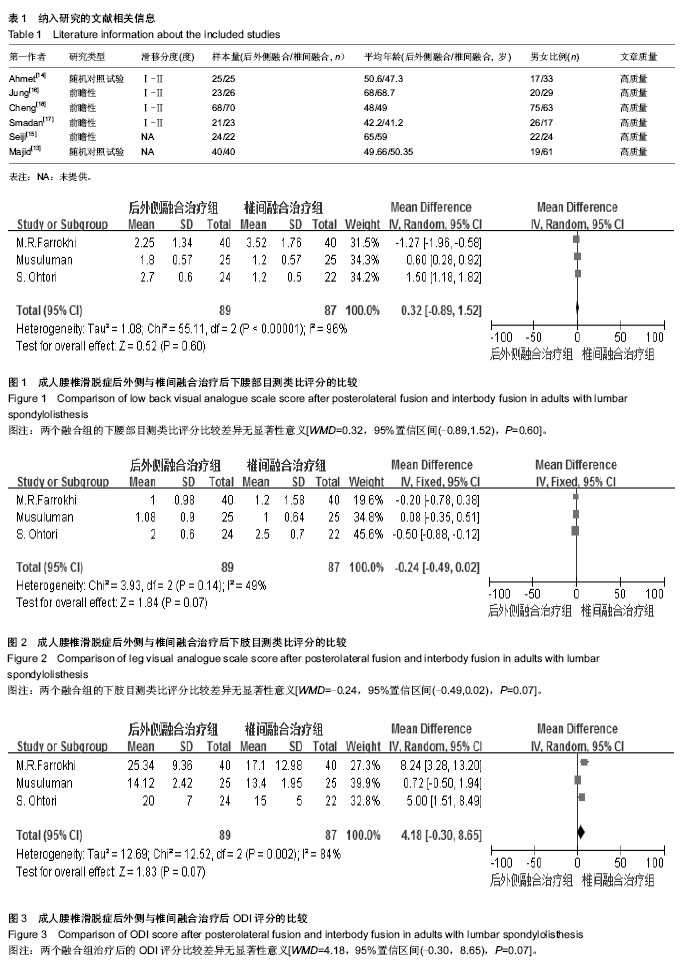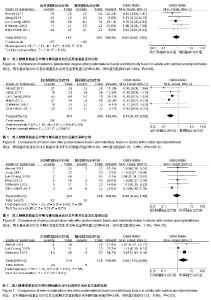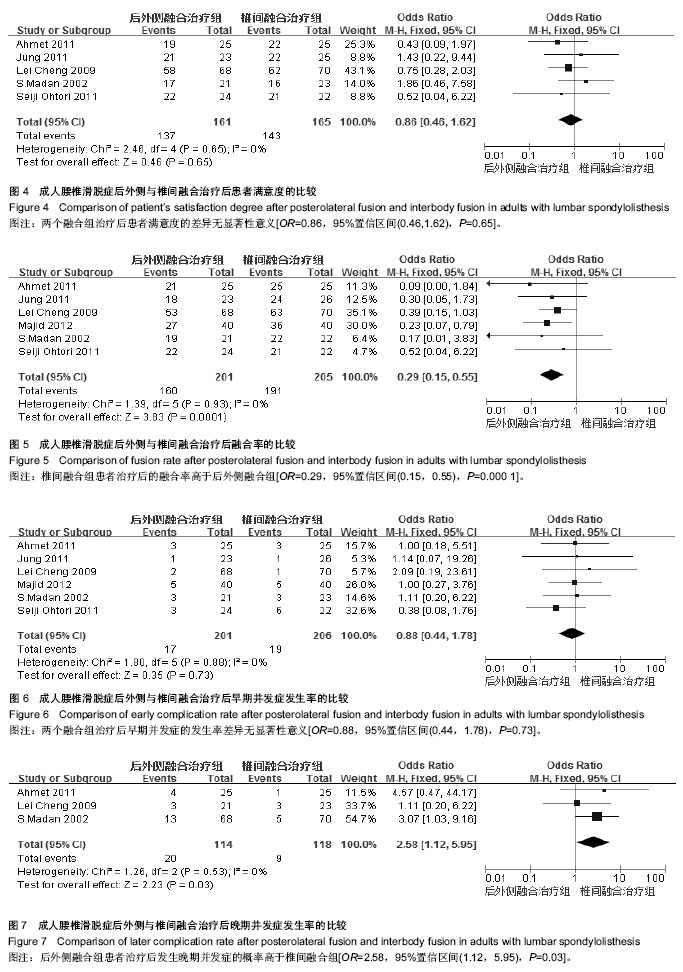| [1] |
Song Chengjie, Chang Hengrui, Shi Mingxin, Meng Xianzhong.
Research progress in biomechanical stability of lateral lumbar interbody fusion
[J]. Chinese Journal of Tissue Engineering Research, 2021, 25(6): 923-928.
|
| [2] |
Tang Xiaokai, Li Weiming.
Role and mechanism of Nel-like molecule-1 in promoting bone fusion after spinal fusion
[J]. Chinese Journal of Tissue Engineering Research, 2021, 25(24): 3914-3920.
|
| [3] |
Yang Qin, Zhou Honghai, Chen Longhao, Zhong Zhong, Xu Yigao, Huang Zhaozhi.
Research status and development trend of pelvic reconstruction techniques: a bibliometric and visual analysis
[J]. Chinese Journal of Tissue Engineering Research, 2021, 25(23): 3718-3724.
|
| [4] |
Zhao Hongshun, A Jiancuo, Wang Deyuan, Xu Zhihua, Gao Shunhong.
Factors affecting the height of early intervertebral space after lumbar interbody fusion via lateral approach
[J]. Chinese Journal of Tissue Engineering Research, 2021, 25(21): 3332-3336.
|
| [5] |
Zhang Chongfeng, Li Xianlin, Peng Weibing, Jia Hongsheng, Cai Lei.
Treating lumbar disc herniation of blood stasis type with Chinese herbs, acupuncture, moxibustion, and massage: a Bayesian network Meta-analysis
[J]. Chinese Journal of Tissue Engineering Research, 2021, 25(17): 2781-2788.
|
| [6] |
Chen Jiang, Li Jinyu, Zheng Chenying, Bai Chunxiao, Zhang Fan, Liu Chuyin, Zhao Xueqian, Yuan Qiaomei, Di Xueshi, Kang Shengqian, Jia Yusong .
Changes in sagittal parameters of cervical spine after double-segment artificial cervical disc replacement and anterior cervical discectomy and fusion
[J]. Chinese Journal of Tissue Engineering Research, 2021, 25(15): 2341-2346.
|
| [7] |
Zhang Cong, Zhao Yan, Du Xiaoyu, Du Xinrui, Pang Tingjuan, Fu Yining, Zhang Hao, Zhang Buzhou, Li Xiaohe, Wang Lidong.
Biomechanical analysis of the lumbar spine and pelvis in adolescent
idiopathic scoliosis with lumbar major curve
[J]. Chinese Journal of Tissue Engineering Research, 2020, 24(8): 1155-1161.
|
| [8] |
Fang Yi, Zhao Wenzhi, Pan Deyue, Han Xin, Zhang Lu, He Hongtao, Shi Feng, Tian Tingxiao.
Acromioclavicular joint dislocation: how to achieve
anatomical reduction, sustained stability and micro-motion
[J]. Chinese Journal of Tissue Engineering Research, 2020, 24(5): 796-802.
|
| [9] |
Tuerhongjiang·Abuduresiti, Meng Xiangyu, Maihemuti·Yakufu, Wang Tiantang, Xieraili·Maimaiti, Dai Jifang, Wang Wei.
Biomechanical advantages of percutaneous endoscopic lumbar discectomy for lumbar disc herniation
[J]. Chinese Journal of Tissue Engineering Research, 2020, 24(36): 5768-5773.
|
| [10] |
Wang Jing, Xu Shuai, Liu Haiying.
Hidden blood loss during posterior lumbar interbody fusion in lumbar spinal stenosis patients with and without rheumatoid arthritis
[J]. Chinese Journal of Tissue Engineering Research, 2020, 24(33): 5307-5314.
|
| [11] |
Cao Liangliang, Xu Jianguang, Mei Wei.
Three-dimensional finite element analysis of the
biomechanical changes of the lumbar spine after the combination of
intervertebral fusion with dynamic internal fixation of the interspinous
process in the lumbosacral region
[J]. Chinese Journal of Tissue Engineering Research, 2020, 24(12): 1905-1910.
|
| [12] |
Fu Jiaxin, Xiao Lianping, Wang Shusen, Li Xiaodong, Han Liqiang, Wang Tonghao.
Therapeutic effects of paraspinal approach combined with internal fixation through pedicle of fractured vertebra versus traditional AF screw-rod system for thoracolumbar fractures
[J]. Chinese Journal of Tissue Engineering Research, 2019, 23(8): 1177-1181.
|
| [13] |
Qiu Zhongpeng, Li Ke, Li Gang, Liu Keyu, Du Xinhui, Meng Defeng, Shi Chenhui, Wang Weishan.
Different treatments for two-part and three-part proximal humeral fractures by Neer classification: follow-up results analyzed using clinical economics
[J]. Chinese Journal of Tissue Engineering Research, 2019, 23(8): 1188-1195.
|
| [14] |
Ke Wei, Li Ke, Wang Sibo, Du Xinhui, Qiu Zhongpeng, Kang Zhilin, Wang Weishan, Li Gang .
Open reduction and plate fixation versus closed reduction and external fixation for distal radius fractures: scores and linear regression analysis
[J]. Chinese Journal of Tissue Engineering Research, 2019, 23(8): 1196-1202.
|
| [15] |
Wen Yi, Su Feng, Liu Su, Zong Zhiguo, Zhang Xin, Ma Pengpeng, Li Yuexuan, Li Rui, Zhang Zhimin.
Establishment of finite element model of L4-5 and mechanical analysis of degenerative intervertebral discs
[J]. Chinese Journal of Tissue Engineering Research, 2019, 23(8): 1222-1227.
|



